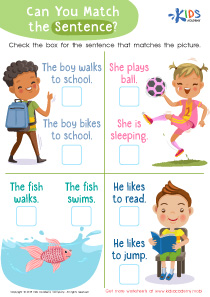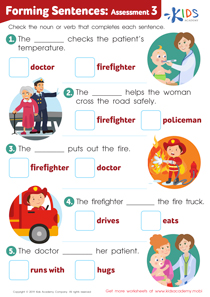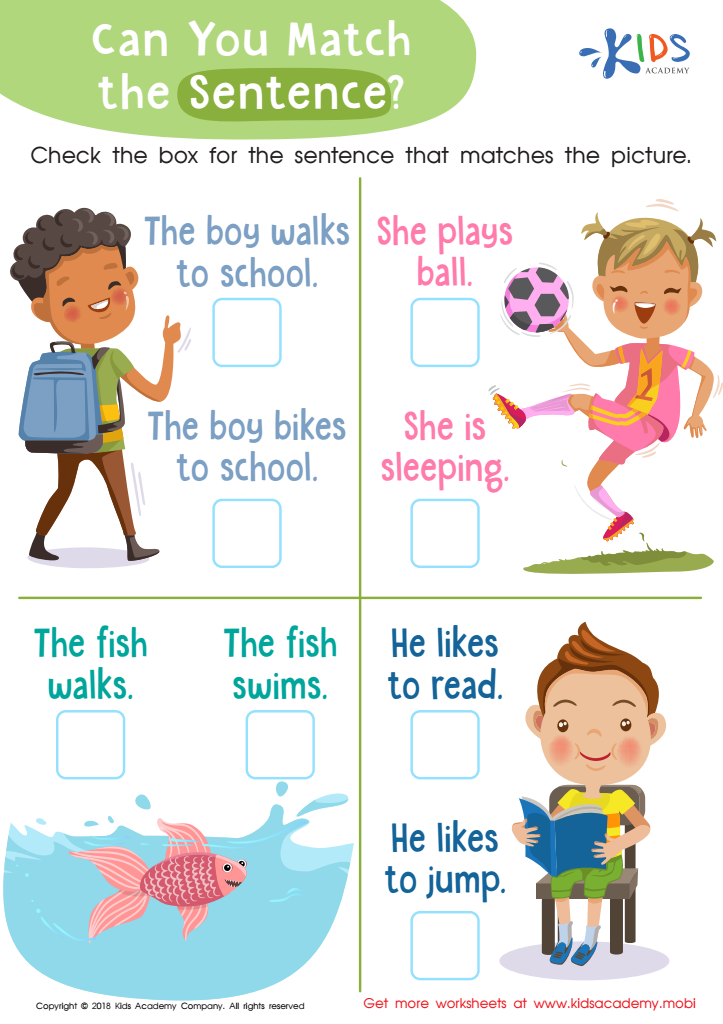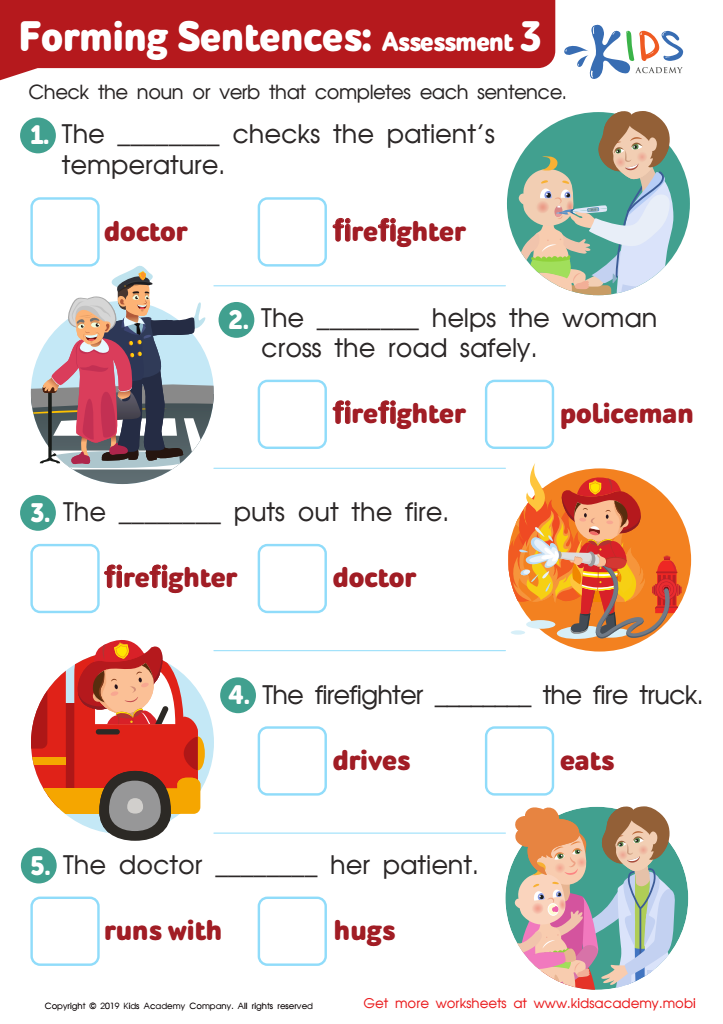Matching Sentences to Illustrations 2 - Lesson for Kindergarten, Chapter - Literature
In this engaging lesson, "Matching Sentences to Illustrations 2," designed for Kindergarten students as part of the Literature chapter under the Comprehension unit, learners will embark on a fascinating journey into the world of reading and understanding. Through activities such as the "Can You Match the Sentence? Worksheet" and "Forming Sentences: Assessment 3 Worksheet," students will develop the foundational skill of connecting written sentences with corresponding illustrations.
This skill is crucial for several reasons. Firstly, it enhances reading comprehension by encouraging students to visualize the text they read, making the information more memorable and easier to understand. Secondly, this lesson fosters critical thinking and attention to detail as students analyze both text and images to find matching pairs. Thirdly, it supports vocabulary development, as students learn new words and concepts through their association with pictures.
By the end of this lesson, students will not only have improved their ability to match sentences with relevant illustrations but also gained confidence in their reading comprehension skills. This sets a solid foundation for future literacy development, making it an essential step in the journey of becoming proficient readers and thinkers.


-
Activity 1 / Can You Match the Sentence? Worksheet
New readers become stronger when they recognize repetitive words and phrases. This engaging worksheet gives them bright and cheery pictures that they can use to decide which of the given sentences match. The repetitive beginnings will give them practice in fluency, and they'll use visual discrimination and decoding skills to decide which sentence matches the picture. Then they'll check off the box, and pat themselves on the back for a job well done!
-
Activity 2 / Forming Sentences: Assessment 3 Worksheet
Forming sentences and knowing how to properly construct them are two things your students must master to be good English students. After learning their ABCs, and short simple words, the next thing is to put those words together to form sentences. Use worksheets such as this simple one to show your kids how to form sentences. In this exercise, your students must look at the pictures, and then check the noun or verb that correctly completes each sentence.


